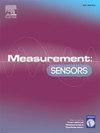Wearable sensor-based intent recognition for adaptive control of intelligent ankle-foot prosthetics
Q4 Engineering
引用次数: 0
Abstract
Prosthetic motor control requires improvement to better adapt to varying gait speeds and terrain inclinations in real time. Traditional methods often fail to meet these demands, prompting research into advanced sensor data and machine learning algorithms. This research study tackles the challenge by using wearable sensors and comparing various machine learning approaches, namely Sparse Bidirectional Long Short-Term Memory (SBLSTM), Adaptive Neuro-Fuzzy Inference System (ANFIS), convolutional neural network (CNN), logistic regression, and K-nearest neighbors (KNN) for effective classification of gait speed and terrain inclination. Various wearable sensor data, such as FSR and accelerometers, were employed to develop robust models for prosthetic control. The SBLSTM model, which utilizes time-series data through Bi-Directional LSTM layers, demonstrated impressive performance with an accuracy of 96.3 %, precision of 96.4 %, recall of 96.5 %, and an F1-score of 96.4 %. In contrast, the ANFIS model, combining gradient-based learning and least squares estimation, showed reasonable predictive capabilities with root mean square error (RMSE) values of 0.12 for speed and 0.14 for inclination. The accuracy of CNN, logistic regression, and KNN was reported to be 60 %, 31 %, and 93 %, respectively. Comparing the other models in terms of computation, the mean inference time for SBLSTM was found to be 25 ms, which proved to balance speed and accuracy better than other models. Furthermore, the SBLSTM model is particularly suited for time-dependent data, making it more appropriate for real-time prosthetic control. The results highlight that using advanced machine learning algorithms and wearable sensor data has great potential to increase the responsiveness and adaptability of lower-limb prosthetic systems. Ultimately, the goal of this work is for prosthetic users to benefit in terms of quality of life-related to improved mobility and adaptability across a range of environmental conditions.
基于可穿戴传感器的智能踝足假肢自适应控制意图识别
假肢运动控制需要改进,以更好地实时适应不同的步速和地形倾斜度。传统方法往往无法满足这些要求,这促使人们研究先进的传感器数据和机器学习算法。本研究通过使用可穿戴传感器来应对这一挑战,并比较了各种机器学习方法,即稀疏双向长短期记忆(SBLSTM)、自适应神经模糊推理系统(ANFIS)、卷积神经网络(CNN)、逻辑回归和 K-nearest neighbors(KNN),从而对步态速度和地形倾斜度进行有效分类。利用各种可穿戴传感器数据(如 FSR 和加速度计)开发了用于假肢控制的稳健模型。通过双向 LSTM 层利用时间序列数据的 SBLSTM 模型表现出色,准确率为 96.3%,精确率为 96.4%,召回率为 96.5%,F1 分数为 96.4%。相比之下,ANFIS 模型结合了基于梯度的学习和最小二乘估计,显示出合理的预测能力,速度的均方根误差 (RMSE) 值为 0.12,倾角的均方根误差 (RMSE) 值为 0.14。据报道,CNN、逻辑回归和 KNN 的准确率分别为 60%、31% 和 93%。在计算方面,与其他模型相比,SBLSTM 的平均推理时间为 25 毫秒,这证明它比其他模型更好地兼顾了速度和准确性。此外,SBLSTM 模型特别适用于时间依赖性数据,因此更适合实时义肢控制。研究结果突出表明,利用先进的机器学习算法和可穿戴传感器数据,在提高下肢假肢系统的响应速度和适应性方面具有巨大潜力。这项工作的最终目标是让假肢使用者在各种环境条件下都能提高行动能力和适应能力,从而提高生活质量。
本文章由计算机程序翻译,如有差异,请以英文原文为准。
求助全文
约1分钟内获得全文
求助全文
来源期刊

Measurement Sensors
Engineering-Industrial and Manufacturing Engineering
CiteScore
3.10
自引率
0.00%
发文量
184
审稿时长
56 days
 求助内容:
求助内容: 应助结果提醒方式:
应助结果提醒方式:


